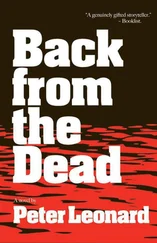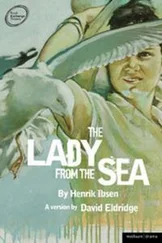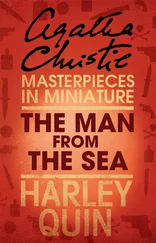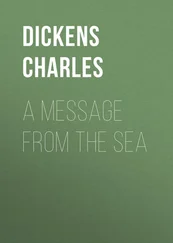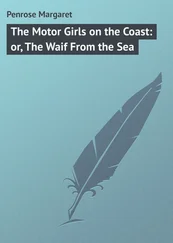And the Rag , of course, ruled most, both in Noah’s boyish imagination and in the collective imagination of the people of Duluth. Although flagship honors fell on the newer, bigger SS Odin Asgaard , the Rag remained — until her foundering — the secret darling of the Superior Steel Company brass. Her officers’ crew all hailed from Duluth, a fact that alone would have made her revered, but she had a mystique, too, one whispered about in the sailors’ bars and church basements. Though exaggerated, an ounce of truth pervaded the legend. She was tenacious in wicked seas, as she proved over and over again in the November gales. She’d withstood ice, the shoals, the concrete piers jutting out into the lakes from Duluth to Ashtabula, and even, allegedly, a tornado in the middle of Lake Huron. She possessed the belly of a whale, too, exceeding her load limit from one trip to the next. Though the Asgaard was one hundred feet longer and made to carry three thousand tons more ore than the Rag , though the Asgaard and her type eventually replaced the ships in the Rag ’s class, during the last few years of her life the Rag performed — categorically — on an almost equal annual footing with the flagship. She was the mother of the Superiors, even if not her majesty.
Noah knew all this because when the subjects of ski jumping, what was for dinner, or the goddamn unions weren’t being discussed at home, the Ragnarøk was. He knew her statistics like some kids knew the batting averages of their favorite ballplayers. He could still remember them.
Olaf’s voice seemed to whistle at him. “That’s the Rag .”
Noah looked up from the picture and saw his father’s nub pinky — the one that had been amputated at the second knuckle because of frostbite — pointing at the picture. “I know.”
“And those are the Bulldogs there, the Bulldogs and a couple hands working on the hull.” “Bulldogs” was the moniker given to the all-Duluth officer crew of the Rag in honor of their tenacity but also because it was the namesake of the local state college. “That kid in the chair is Bjorn Vifte. You knew Bjorn. Seventeen years old there. That’s me, of course, that’s Jan, that’s Joe, that’s Luke — you knew him, too — and that’s Danny Oppvaskkum, the engineer. This picture was taken a few days after Christmas the year before she went down.”
“Who’s this?” Noah asked, pointing to the kid on the ladder.
“Ed Krebs, one of the deckhands.”
“And who’s Joe?”
“Joe was second mate. Joe Schlichtenberg. He hung around when you were a kid. Joe probably froze to death. Or drowned. Danny O. was in charge of the engine room. He probably burned to death.”
Noah had always longed to hear — from his father — the story of what had happened the night the Rag went down, and even a hint of it got his pulse thrumming. “The ship here, she’s at Fraser shipyards?”
“Four or five ships from our fleet wintered up there every year. In ’66 and ’67 the Rag got her new engine, a diesel. They did it at Fraser.”
“You guys all look the same.”
“We were.”
They sat in the dining room of the Manitou Lodge for a couple hours, talking about each photograph as if it were a wonder. The pictures dated as far back as the spring of 1938, Olaf’s first year on the lakes, when he had shipped as a deckhand on the two-hundred-fifty-three-foot Harold Loki , a ship named for the original chief executive of Superior Steel. Olaf was a baby-faced kid in one of the pictures, his shirtsleeves rolled to the elbows, a cigarette dangling from his lips while a buddy’s hand stuck him with a fake jab to the ribs. Along both sides of the main deck of the ship in the background, a procession of fresh-air vents loomed like a marching band of tuba players, and the smokestack in the stern coughed up its coal smoke in pitch-black plumes.
Olaf couldn’t remember the other deckhand’s name, but he told Noah about a whole crew’s worth of sixteen-and eighteen-year-old kids shipping out in order to avoid abusive fathers or college. Some of the boys, he said, were just cut from the lonely cloth and wanted to get lost. He told him about Tony Ragu, a kid from Muskegon who worked on the Loki for the first three months of the shipping season that year before being picked up by the Duluth Lumberjacks, a minor league baseball team that wanted his ninety-five-mile-per-hour fast-ball. He remembered Cliff Gornick, a Chicago guy who put himself through Northwestern Law School by working Superior Steel boats in the summer and who eventually became a famous Chicago newscaster. Russ Jackson was the first black guy he saw on the boats, second cook on the Loki . A potbellied, middle-aged man with a receding hairline and a wife and seven kids in Detroit, he cooked the best beef brisket north of New Orleans. Olaf smiled when he talked about the Cejka brothers — one of whose sons was later a watchman on the Rag —thick-shouldered shovelers who worked in the engine room of the Loki moving coal. If not for the whites of their eyes and their ungloved white hands, Noah might not have known there were any people in the picture at all.
There were pictures of the aerial bridge at the entrance to Duluth harbor, cloaked in fog, a cat’s cradle of steel; of the Loki , the Valkyrie —his father’s second ship — and the Rag all scuttling through the locks at Sault Sainte Marie; of the Mackinac bridge spanning the straits between Lakes Huron and Michigan; of the loading and unloading complexes in Gary and Conneaut; of crewmates, some anonymous or forgotten, others so well remembered it seemed as if Olaf expected them to walk into the dining room any minute and join them; and of Olaf, standing in front of the offices of Superior Steel in the LaCroix Building on East Second Street in downtown Duluth, an ear-to-ear grin on his twenty-eight-year-old face the afternoon he passed his Coast Guard exam to become an officer, and standing behind the wheel in the pilothouse of the Valkyrie .
Noah looked up and down between the pictures and his father, and what struck him was how much he himself resembled the man in the photographs and how little the man sitting across from him now did. Three days ago he might have overlooked his father in a crowd, now he felt like he was him. Noah wondered, as his father reconstructed more than thirty years of his life with the help of the photographs, how it had felt to be him then, in the spring of 1938, and how it felt to be him now, with the burden of all that had happened and all that he’d suffered, suffering who knew what illness. More than anything Noah wondered what it would be like to sit across the table from a son, imagined a whole lifetime of moments like this: spooning baby food, helping with homework, explaining the birds and the bees, sharing a beer over a cribbage board.
By the time the waitress announced that the dining room was closing for the afternoon, they’d finished with the photographs and had been sitting in a reverential silence. “Listen, Dad,” Noah said, “why don’t you pack these up? I have to call Nat before we head back to the house.”
Olaf said, “Sure, sure.” And with the care of a surgeon, he placed each of the photographs back into their sheaths and then into the manila envelope.
“WE’LL BE OUT of your hair in a minute,” he assured the waitress behind the cash register at the Manitou Lodge. She nodded and turned her attention back to painting her nails as Noah dialed the pay phone.
“Hey,” he said, “I didn’t think I’d catch you.” The phone at Natalie’s office had rung five times before she’d picked up.
Читать дальше





